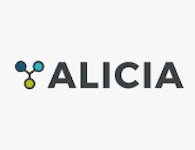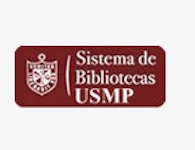A systematic review and meta‐analysis of the relative efficacy and safety of treatment regimens for HIV ‐associated cerebral toxoplasmosis: is trimethoprim‐sulfamethoxazole a real option?

Ver/
Trabajo
(application/pdf: 627.4Kb)
(application/pdf: 627.4Kb)
Fecha
2017-01-10Autor(es)
Hernandez, AV.
Thota, P.
Pellegrino, D.
Pasupuleti, V.
Benites‐Zapata, VA.
Deshpande, A.
Penalva de Oliveira, AC.
Vidal, JE.
Metadatos
Mostrar el registro completo del ítemResumen
Objectives
The objective of this study was to perform a systematic review and meta‐analysis of the literature to evaluate the efficacy and safety of therapies for cerebral toxoplasmosis in HIV ‐infected adults. The pyrimethamine plus sulfadiazine (P‐S) combination is considered the mainstay therapy for cerebral toxoplasmosis and pyrimethamine plus clindamycin (P‐C) is the most common alternative treatment. Although trimethoprim‐sulfamethoxazole (TMP ‐SMX ) has potential advantages, its use is infrequent.
Methods
We searched PubMed and four other databases to identify randomized controlled trials (RCT s) and cohort studies. Two independent reviewers searched the databases, identified studies and extracted data. Risk ratios (RR s) were pooled across studies using random‐effects models.
Results
Nine studies were included (five RCT s, three retrospective cohort studies and one prospective cohort study). In comparison to P‐S, treatment with P‐C or TMP ‐SMX was associated with similar rates of partial or complete clinical response [P‐C: RR 0.87; 95% confidence interval (CI ) 0.70–1.08; TMP ‐SMX : RR 0.97; 95% CI 0.78–1.21], radiological response (P‐C: RR 0.92; 95% CI 0.82–1.03), skin rash (P‐C: RR 0.81; 95% CI 0.56–1.17; TMP ‐SMX : RR 0.17; 95% CI 0.02–1.29), gastrointestinal impairment (P‐C: RR 5.16; 95% CI 0.66–40.11), and drug discontinuation because of adverse events (P‐C: RR 0.32; 95% CI 0.07–1.47). Liver impairment was more frequent with P‐S than P‐C (P‐C vs . P‐S: RR 0.48; 95% CI 0.24–0.97).
Conclusions
The current evidence fails to identify a superior regimen in terms of relative efficacy or safety for the treatment of HIV ‐associated cerebral toxoplasmosis. Use of TMP ‐SMX as preferred treatment may be consistent with the available evidence and other real‐world considerations. Larger comparative studies are needed.
Colecciones
- Artículos [274]
Materias
Editor
British HIV Association
Acceso
info:eu-repo/semantics/openAccess
Recurso(s) relacionado(s)
https://doi.org/10.1111/hiv.12402http://hdl.handle.net/10757/622311







